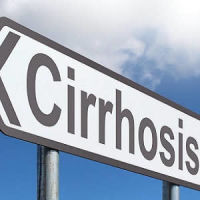Every day
in perioperative care, physicians ask who benefits from intensive care, said
Hannah Wunsch, of Sunnybrook Health Sciences Centre, University of Toronto and
Columbia University, speaking at LIVES 2017, the 30th annual
congress of the European Society of Intensive Care Medicine, which met in
Vienna last month.
You might also like: Intensive care systems research: interview with Hannah Wunsch
While guidelines exist on admission, discharge and triage (SCCM 2016), their recommendations are vague on admission criteria:
“To optimize resource use while improving outcomes, we suggest guiding ICU admissions on the basis of a combination of 1) specific patient needs that can be only addressed in the ICU environment, such as life-supportive therapies, 2) available clinical expertise, 3) prioritization according to the patient’s condition, 4) diagnosis, 5) bed availability, 6) objective parameters at the time of referral, such as respiratory rate, 7) potential for the patient to benefit from interventions, and 8) prognosis (grade 2D).”
Intensivists are already good at triage, but it’s hard to differentiate who benefits from intensive care, especially amongst the least sick and most sick patients considered for admission. The “tails on the curve” are where the difficult decisions are made, said Wunsch. At one end of the curve are the not so sick and the very sick are at the other end. Those patients who need and benefit from mechanical ventilation, vasopressors, continuous dialysis and ICP monitoring are clear.
The need for ICU could be predicted by using admission to ICU as the outcome, but that just predicts a clinical decision that is already being made, noted Wunsch. Scores for severity, such as SAPS3, are helpful to predict outcome, but they are used when the decision to admit has already been made.
Previous research (Wunsch et al. Anesthesiology 2016) analysed the association between use of intensive care and hospital mortality adjusted for patient and hospital factors for 5 procedures that have variable hospital mortality. It showed a lack of association between use of intensive care services and hospital mortality for patients undergoing major surgery and also wide variability in ICU admission.
The things we measure are still too crude to capture the physician’s gut feeling that someone isn’t going to do well, said Wunsch. There are two ways we can learn about who will benefit: when resources are ‘tight’ we get periods when ICU beds are not available, when ICU beds are over-resourced, there is variability in use of ICU.
There is wide variability in availability of intensive care across countries. For example, the study of 7 cities in high and middle income countries by Austin etal. (2014) had at the extremes Boston, USA with 18.9 ICU beds per 100k population and Kumasi, with a figure of 0.4.
The USA is well provided with ICU beds and a previous study found approximately 67% occupancy across 97 ICUs (Wunsch 2013) . Research by Valley and colleagues, showed an association of ICU admission with mortality among older patients with pneumonia, but when the decision to admit appeared to be discretionary it was associated with improved survival. Chang and Shapiro (2016) investigated the association between ICU use during hospitalisation and costs in a medical population and found that those hospitals that use ICUs more often for 4 common medical conditions were more likely to perform invasive procedures and have higher costs but with no improvement in hospital mortality
Number needed to treat (NNT)
Zimmerman and Kramer attempted a model for identifying patients who may not need ICU admission in terms of predicting whether patients would need a life-supporting treatment (J Crit Care), with 60% receiving ‘active’ treatment, and 40% ‘monitoring’. Of the high risk monitoring patients, 20% needed active intervention, making a number needed to treat (NNT) of 5.
Wunsch concluded that in reality, “appropriate” triage is shaped by other options for care, such as intermediate care units, and the general ward, which is underpinned by nursing care. For monitored patients, the NNT becomes high. A triage score is the “holy grail” of intensive care, and we need to keep trying to prove the benefits of ICU, perhaps by doing RCTs on surgical procedures, she suggested.



























